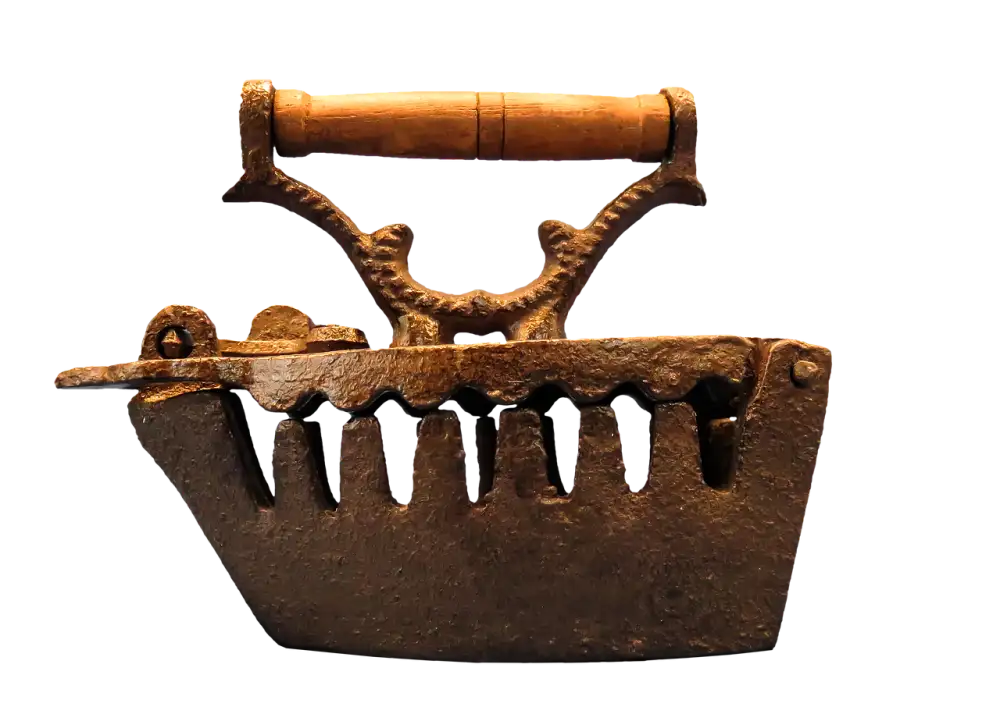Revive Your Rusty Cast Iron: A Step-by-Step Guide to Cleaning and Restoring

Cast iron cookware has been a staple in kitchens for centuries, known for its durability and ability to retain heat. However, over time, cast iron can develop rust, which not only affects its appearance but also its performance. Cleaning and restoring rusty cast iron is essential to revive its beauty and functionality. In this step-by-step guide, we will explore the process of cleaning and restoring your rusty cast iron, ensuring it lasts for generations to come. So let's dive in and bring back the luster of your beloved cast iron cookware!
Gather necessary materials for cleaning
To effectively clean and restore your rusty cast iron, it is important to gather the necessary materials beforehand. Here's a list of items you'll need:
1. Steel wool or a stiff brush: These will help in removing the rust and grime from the surface of the cast iron.
2. Mild dish soap: Use a gentle dish soap to clean off any dirt or grease that may be present on the cast iron.
3. White vinegar: This acidic solution helps dissolve rust and remove any stubborn stains from the cast iron.
4. Baking soda: A natural abrasive, baking soda can be used to scrub away tough rust spots on the cast iron.
5. Paper towels or clean cloth: These will be needed for drying the cast iron after cleaning.
6. Cooking oil or shortening: To season and protect your cast iron, you'll need a cooking oil or shortening with a high smoke point.
By gathering these materials beforehand, you'll have everything you need to successfully clean and restore your rusty cast iron cookware.
Preparing the cast iron for cleaning
Before you begin the process of cleaning your rusty cast iron, it is important to properly prepare it. Start by removing any loose debris or food particles from the surface using a stiff brush or scraper. Be gentle yet thorough to avoid damaging the cast iron. Next, rinse the cast iron with warm water to remove any remaining dirt or residue. Avoid using soap at this stage as it can strip away the seasoning. Finally, dry the cast iron thoroughly using a clean towel or by placing it in a warm oven for a few minutes. By preparing your cast iron properly, you are setting the foundation for successful rust removal and restoration.
Removing rust from the cast iron
To remove rust from your cast iron, start by using a stiff brush or steel wool to scrub away any loose rust particles. Make sure to scrub in circular motions, focusing on the areas with the most rust. For stubborn rust spots, you can create a paste by mixing equal parts baking soda and water. Apply the paste to the rusty areas and let it sit for a few minutes before scrubbing again. If the rust doesn't come off completely, you can try using white vinegar or lemon juice as a natural rust remover. Simply soak a cloth in vinegar or lemon juice and rub it onto the rusty spots. Let it sit for about 15 minutes before scrubbing again. Repeat this process until all the rust is removed. Remember to rinse the cast iron thoroughly after removing the rust to ensure that no residue remains.
Scrubbing and cleaning the cast iron
After removing the rust from your cast iron, it's time to give it a thorough scrubbing and cleaning. Start by rinsing the cast iron under warm water to remove any loose debris. Then, using a stiff brush or sponge, scrub the surface of the cast iron with a mild dish soap. Be sure to scrub all sides, including the handles and corners.
For stubborn stains or food residue, you can create a paste using equal parts baking soda and water. Apply this paste to the affected areas and let it sit for a few minutes before scrubbing again. The baking soda will help break down any tough stains without damaging the cast iron.
Once you have thoroughly cleaned the cast iron, rinse it again under warm water to remove any soap residue. Avoid using harsh chemicals or abrasive cleaners as they can strip away the seasoning on your cast iron.
After rinsing, use a clean cloth or paper towel to dry the cast iron completely. It's important to ensure that there is no moisture left on the surface as this can lead to rust formation.
Remember, never leave your cast iron soaking in water as this can also cause rust. Instead, clean it immediately after use and dry it thoroughly before storing.
By following these steps for scrubbing and cleaning your cast iron, you'll be able to restore its natural beauty and maintain its longevity for years to come.
Drying and seasoning the cast iron
Drying and seasoning the cast iron is a crucial step to ensure its longevity and prevent rust from forming again. After cleaning, thoroughly dry the cast iron using a clean towel or by placing it on a low heat stove burner for a few minutes. Make sure all moisture is completely evaporated to avoid any potential rust spots.
Once dry, it's time to season the cast iron. Seasoning helps create a non-stick surface and adds flavor to your dishes. Apply a thin layer of vegetable oil or melted shortening to the entire surface of the cast iron, including the handle and exterior. Use a paper towel to evenly distribute the oil and remove any excess.
Next, place the cast iron upside down in an oven preheated to 350°F (175°C). This allows any excess oil to drip off and prevents pooling. Bake it for about an hour, then turn off the oven and let it cool inside before removing.
Repeat this process several times to build up a good seasoning layer. Each time you cook with your cast iron, it will continue to develop its seasoning, becoming more non-stick over time.
Remember, never use soap or harsh detergents on your seasoned cast iron as they can strip away the protective layer. Instead, simply rinse with hot water and scrub gently if needed. Dry thoroughly before storing in a cool, dry place.
By properly drying and seasoning your cast iron after cleaning, you'll ensure its durability and enjoy cooking with it for years to come.
Tips for preventing rust on cast iron
To prevent rust on your cast iron, it's important to follow a few simple tips. Firstly, always make sure to thoroughly dry your cast iron after cleaning it. Any moisture left on the surface can lead to rust formation. Secondly, avoid using harsh detergents or abrasive cleaners that can strip away the seasoning and expose the iron to moisture. Instead, opt for mild dish soap and a soft brush or sponge. Thirdly, regularly season your cast iron by applying a thin layer of oil after each use. This helps create a protective barrier against moisture and prevents rust from developing. Lastly, store your cast iron in a dry place with good ventilation to prevent any humidity from causing rust. By following these tips, you can enjoy your clean and well-maintained cast iron for years to come.
Now that you have successfully cleaned and restored your rusty cast iron, it's time to reap the rewards of your hard work. With proper care and maintenance, your cast iron will continue to serve you for years to come.
Remember to always dry your cast iron thoroughly after each use to prevent rust from forming. Additionally, make sure to season it regularly with a thin layer of oil to maintain its non-stick surface.
By following these simple steps and incorporating them into your cooking routine, you can enjoy the many benefits of using a clean and well-maintained cast iron. From perfectly seared steaks to fluffy pancakes, your cast iron will enhance the flavor and quality of your culinary creations.
So go ahead, gather your ingredients, fire up the stove, and let your restored cast iron take center stage in your kitchen. Happy cooking!
Published: 15. 12. 2023
Category: Home



